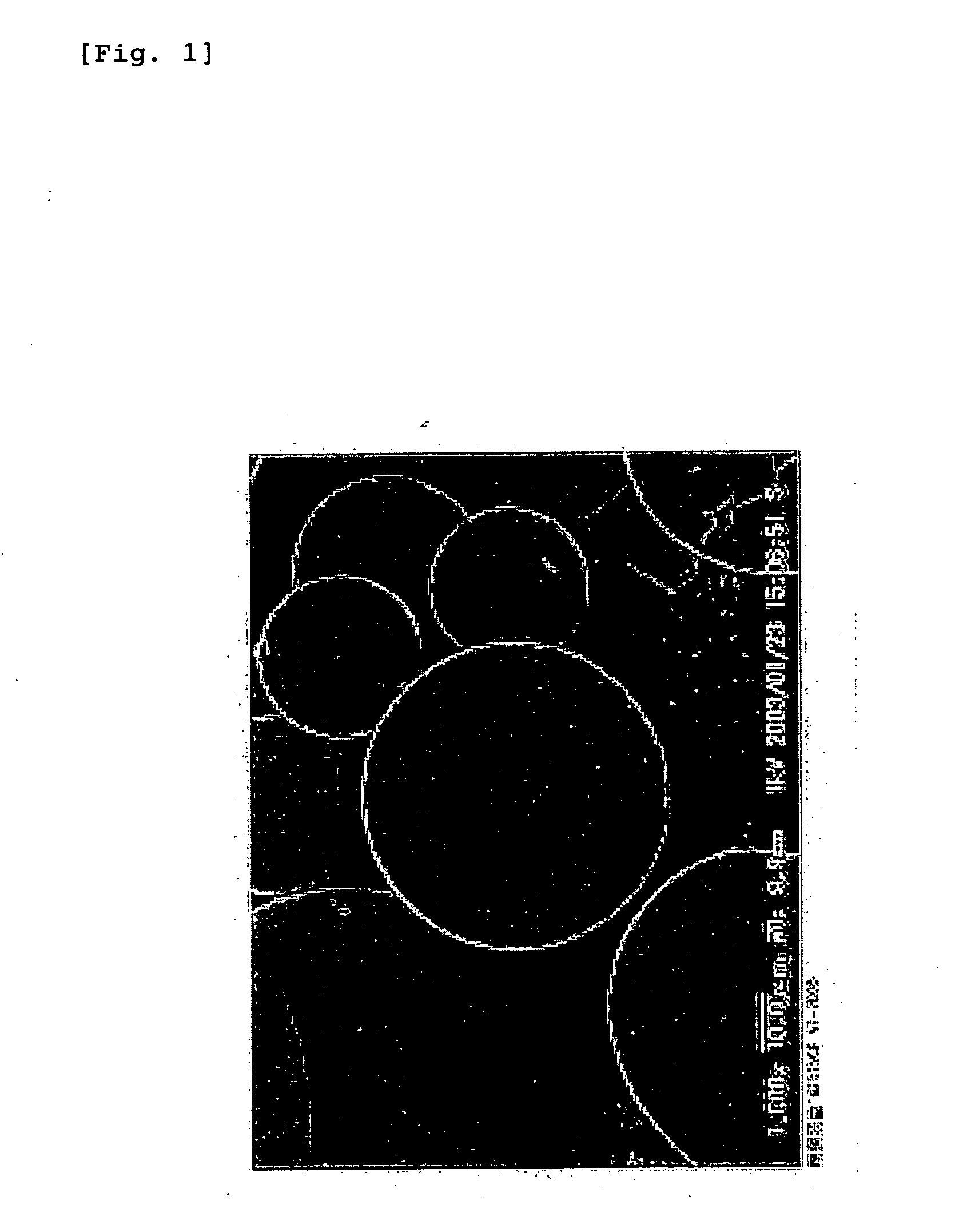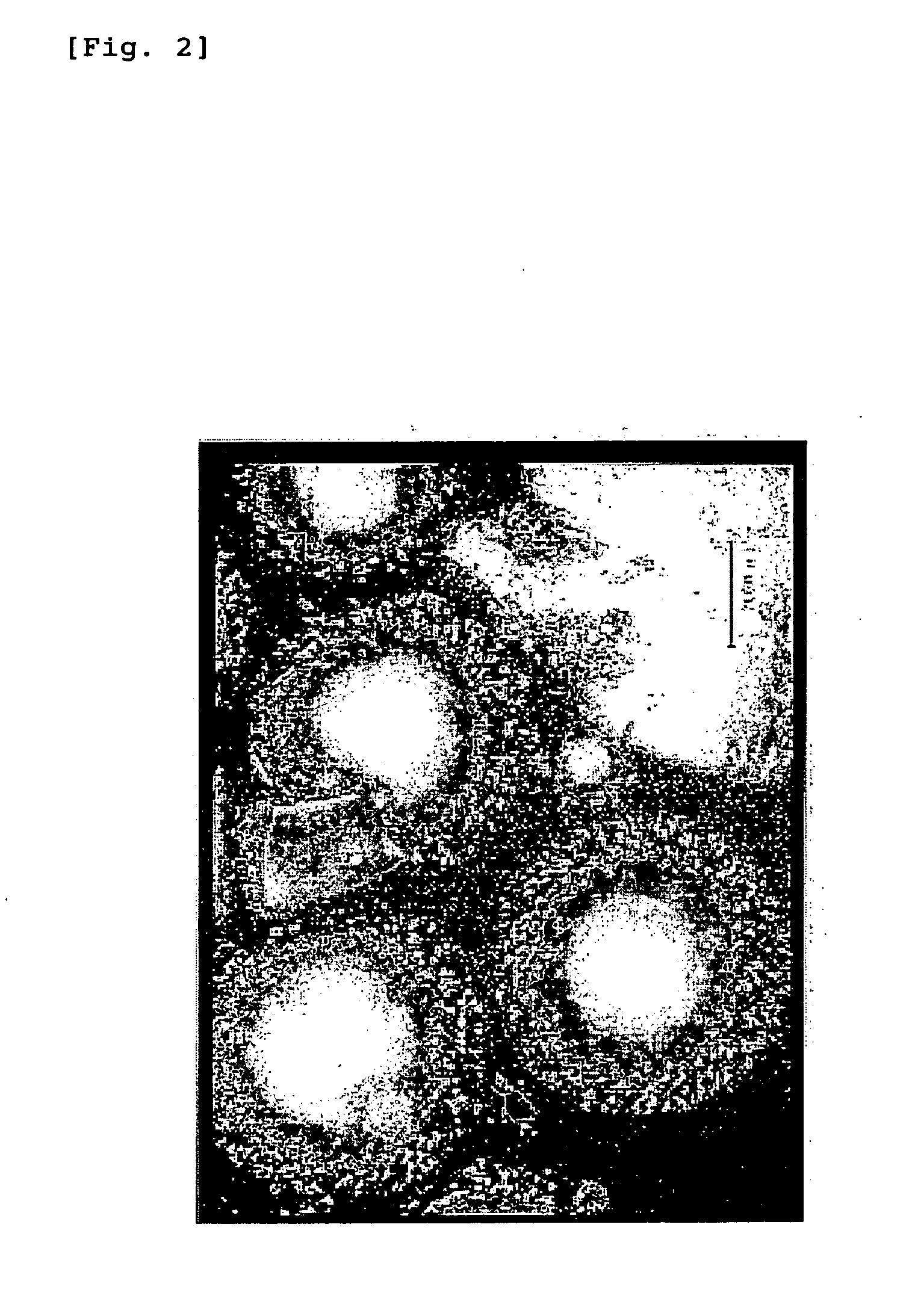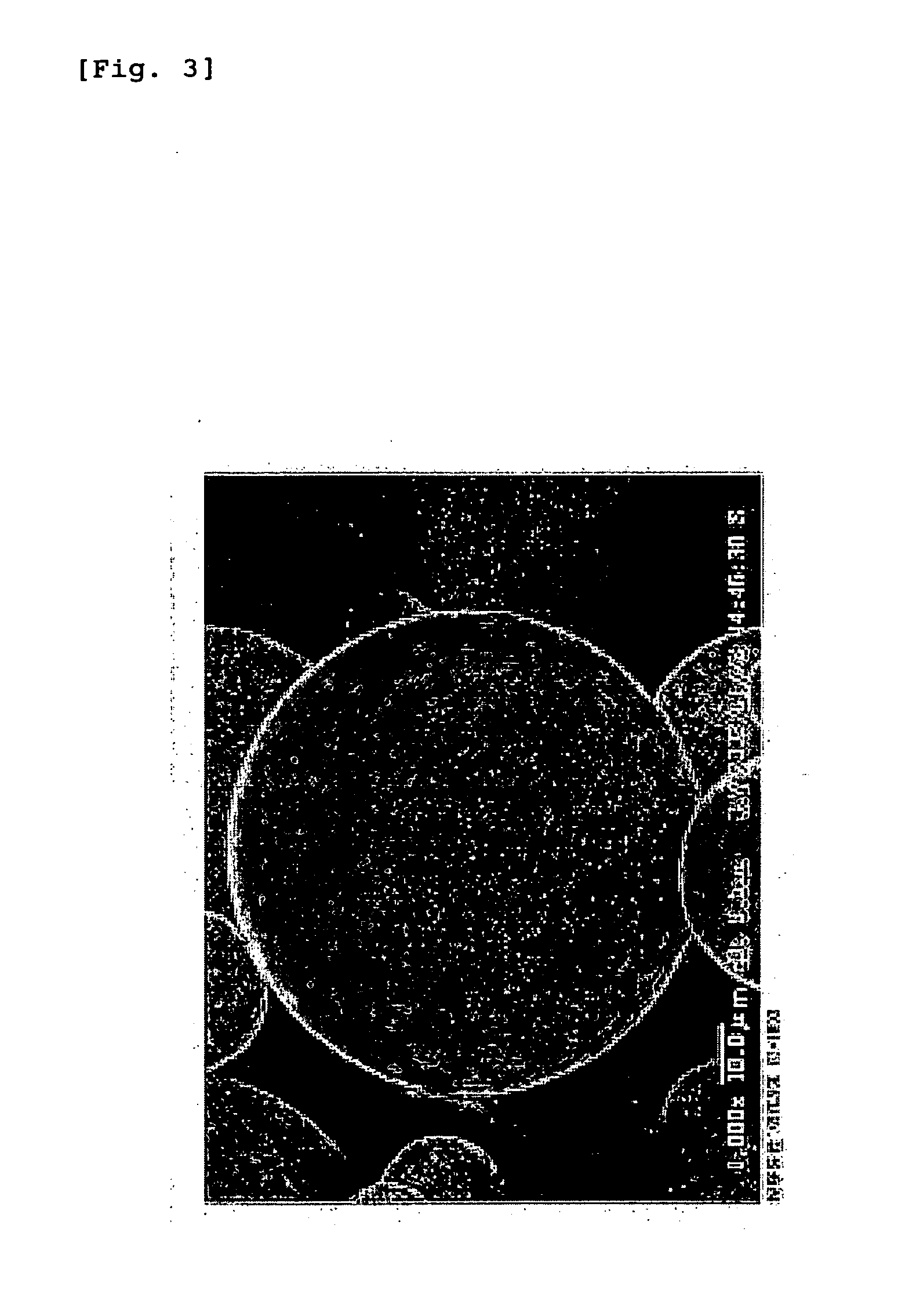Hyaluronic acid modification products and drug carrier therefrom
- Summary
- Abstract
- Description
- Claims
- Application Information
AI Technical Summary
Benefits of technology
Problems solved by technology
Method used
Image
Examples
example 1
Preparation of Hyaluronic Acid-Coated PLGA Microspheres
example 1-1
) Synthesis of Hyaluronic Acid having Hydrazide Groups (HZ) Introduced Therein (HA-HZ)
[0193] Hyaluronic acid (HA) having a molecular weight of 2.5×104 daltons (DENKI KAGAKU KOGYO K.K.; 100 mg) was dissolved in distilled water at a concentration of 1%, and the pH of the solution was adjusted to 4.7 to 4.8 with 5N hydrochloric acid. 1-Ethyl-3-(3-dimethylaminopropyl)carbodiimide (EDC) (Sigma-Aldrich Corp.) and dihydrazide adipate (ADH) (Sigma-Aldrich Corp.) were added to the solution such that the amount of EDC added was at a molar ratio of 5:1, and the amount of ADH added was at a molar ratio of 40:1, to glucuronic acids (carboxyl groups) contained in the Hyaluronic acid used. The mixture was reacted for 2 hours at room temperature, with its pH being kept at 4.7 to 4.8 with 5N hydrochloric acid. The reaction mixture was dialyzed against a 100 mM aqueous solution of sodium chloride and a 25% aqueous solution of ethanol (Spectra / Por 7, molecular cutoff (MWCO): 12 k-14 k daltons), and ly...
example 2
Preparation of Hyaluronic Acid-Coated PLA Nanospheres
(Example 2-1) Synthesis of Hyaluronic Acid Having PLA Introduced therein (HA-PLA)
[0197] HA-HZ (100 mg) obtained in the same manner as in Example 1-1 was dissolved in 20 mL of water (concentration 0.5%), and 4 mL of a cation exchange resin of the H type (Dowex 50WX8-400, 4.8 meq / g) was added (ion exchange capacity 100 times that of the carboxyl groups of HA), followed by allowing the mixture to stand for 3 days at room temperature. The supernatant was recovered, and passed through a 0.22 μm filter. To the filtrate, 150 μL of a 1M TBA-OH (tetra-N-butylammonium hydroxide) solution was added. After being adjusted to pH 8, the mixture was lyophilized. PLA0005 (molecular weight 5,000 daltons), EDC and NHS, each in an amount which was at a molar ratio of 5:1 to glucuronic acids (carboxyl groups) contained in the lyophilized HA-HZ-TBA, were dissolved in 10 mL of DMSO, and the solution was allowed to stand for 2 hours at room temperature...
PUM
| Property | Measurement | Unit |
|---|---|---|
| Particle size | aaaaa | aaaaa |
| Residence time | aaaaa | aaaaa |
| Electrical resistance | aaaaa | aaaaa |
Abstract
Description
Claims
Application Information
 Login to View More
Login to View More - R&D
- Intellectual Property
- Life Sciences
- Materials
- Tech Scout
- Unparalleled Data Quality
- Higher Quality Content
- 60% Fewer Hallucinations
Browse by: Latest US Patents, China's latest patents, Technical Efficacy Thesaurus, Application Domain, Technology Topic, Popular Technical Reports.
© 2025 PatSnap. All rights reserved.Legal|Privacy policy|Modern Slavery Act Transparency Statement|Sitemap|About US| Contact US: help@patsnap.com



